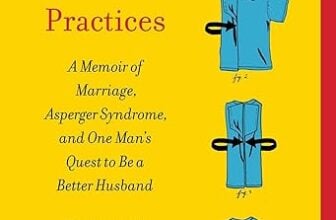Have you ever wondered if there is a significant difference between slip and fall accidents versus trip and fall incidents? Understanding the differences between these types of falls could potentially impact how you approach a legal case or safety measures in your surroundings.
Did you know that the Health and Safety at Work report revealed that approximately 179,520 people were injured by slips, trips, and falls in the recorded period?
Slip, trip, and fall attorney Gabriel Mendoza tells us that by studying the different causes, injuries, and liability components of each, you may be startled to discover critical disparities that may be significant for your health and legal protection.
In this discussion, we’ll look at how to distinguish between slip and fall and trip and fall accidents so that you can make more informed decisions and manage risks more effectively.
Causes of Slip and Fall Accidents
Slip and fall accidents often occur due to hazardous conditions such as wet floors or uneven surfaces. When walking on a wet floor, you may only realize the danger once it’s too late. Your feet can easily lose traction, causing you to slip and fall unexpectedly.
Another common cause of slip and fall accidents is inadequate lighting. In dimly lit areas, it’s harder to see potential hazards on the ground, increasing the risk of tripping and falling. Cluttered walkways and obstructed pathways create obstacles that can easily trip you up.
By keeping these factors in mind and taking precautions, you can help prevent slip and fall accidents.
Causes of Trip and Fall Accidents
Here are the potential hazards that could lead to trip-and-fall accidents.
Uneven surfaces such as cracked sidewalks, loose floorboards, or uneven carpeting are common culprits. Keep an eye out for objects obstructing walkways like cables, wires, or clutter that can easily trip you up. Poor lighting in walkways or staircases can also contribute to trip-and-fall incidents, impairing visibility and making it harder to spot potential obstacles.
Another common cause of trip-and-fall accidents is improper footwear. Wearing shoes with slippery soles, loose straps, or heels that are too high can increase the risk of tripping.
Distractions such as texting, talking on the phone, or not paying attention to your surroundings can make you more susceptible to tripping over hazards.
Common Injuries in Slip Accidents
Be cautious of the potential injuries that can result from slip accidents, ranging from minor bruises to more serious fractures.
When you experience a slip-and-fall incident, common injuries that may occur include bruises, cuts, sprains, and strains. These injuries often result from the sudden impact of hitting the ground or other hard surfaces during a slip.
In more severe cases, slip accidents can lead to fractures, particularly in the wrists, arms, hips, and ankles. Fractures can cause significant pain, swelling, and reduced mobility, requiring immediate medical attention. Head injuries, such as concussions, are also common in slip accidents, especially if the individual hits their head during the fall.
Seek medical help after a slip accident, even if you feel fine initially, as some injuries may manifest later. Document the incident and any visible injuries for potential legal purposes. Stay aware of the risks associated with slip accidents to prevent and address injuries immediately.
Common Injuries in Trip Accidents
When you trip and fall, your body is often propelled forward, leading to injuries such as cuts and scrapes from contact with the ground. These abrasions can range from minor scratches to more severe wounds requiring medical attention.
Bruises are also common in trip accidents, caused by the impact of the fall on your body. The forceful nature of a trip can result in bruising on various parts of your body, typically appearing as discolored areas due to broken blood vessels beneath the skin.
Twisted ankles are a frequent injury in trip accidents. As you stumble and try to regain balance, the sudden movements can cause your ankle to twist unnaturally, leading to sprains or strains.
These injuries can be painful and may require rest, ice, compression, and elevation to facilitate healing. Seek medical attention if you experience severe pain, swelling, or difficulty bearing weight on the injured ankle after a trip accident.
Liability and Compensation Differences
Understand the distinctions between slip and fall cases and trip and fall incidents when determining liability and compensation.
In slip-and-fall cases, liability often hinges on whether the property owner took reasonable steps to maintain a safe environment. Factors like wet floors without warning signs or uneven surfaces can contribute to liability.
Trip and fall incidents typically involve hazards that obstruct a person’s path, such as loose carpeting or objects left in walkways. The key difference lies in the hazard: slipping involves losing traction, while tripping involves physical obstruction.
When it comes to compensation, slip-and-fall cases may result in higher payouts due to the potential for severe injuries like broken bones or head trauma. Trip and fall incidents, while still capable of causing injuries, may lead to lower compensation amounts as they’re perceived as less severe. Consult with a legal professional to understand the specifics of your case and pursue the appropriate compensation for your injuries.
Conclusion
So, now you know the difference between slip and fall accidents and trip and fall accidents. Understanding the causes and common injuries can help you determine liability and seek compensation. Remember to stay aware of your surroundings to prevent these accidents from happening in the first place. Stay safe and be cautious to avoid any potential injuries.
FAQs
What is the main difference between a slip and a trip accident?
Slip accidents occur when you lose traction on smooth or wet surfaces, whereas trip accidents are caused by obstacles or uneven ground.
How can I prevent slip and fall incidents at home?
Keep floors dry, remove clutter, ensure proper lighting, use non-slip mats and repair uneven surfaces to minimize risks.
What types of injuries are common in these accidents?
Injuries range from minor bruises and cuts to severe fractures, head trauma, and sprains, depending on the accident’s nature.
Who is typically held liable in a fall accident case?
Liability depends on whether the property owner maintained a safe environment; negligence can lead to legal responsibility.
Why is legal advice important after a fall accident?
Expert legal guidance helps determine liability, secure proper compensation, and protect your rights following an accident.





